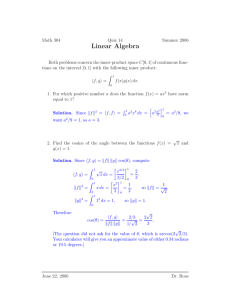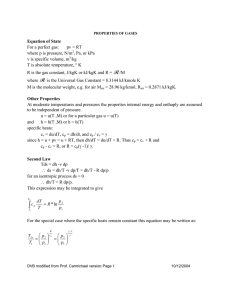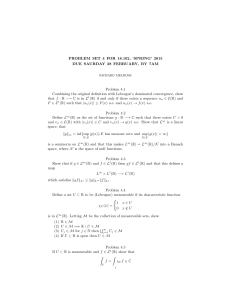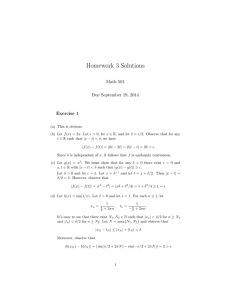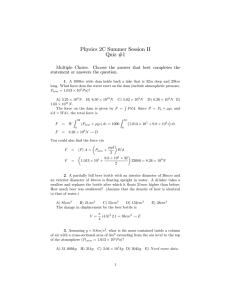MA2223: SOLUTIONS TO PROBLEM SHEET 4 k.k) and let
advertisement
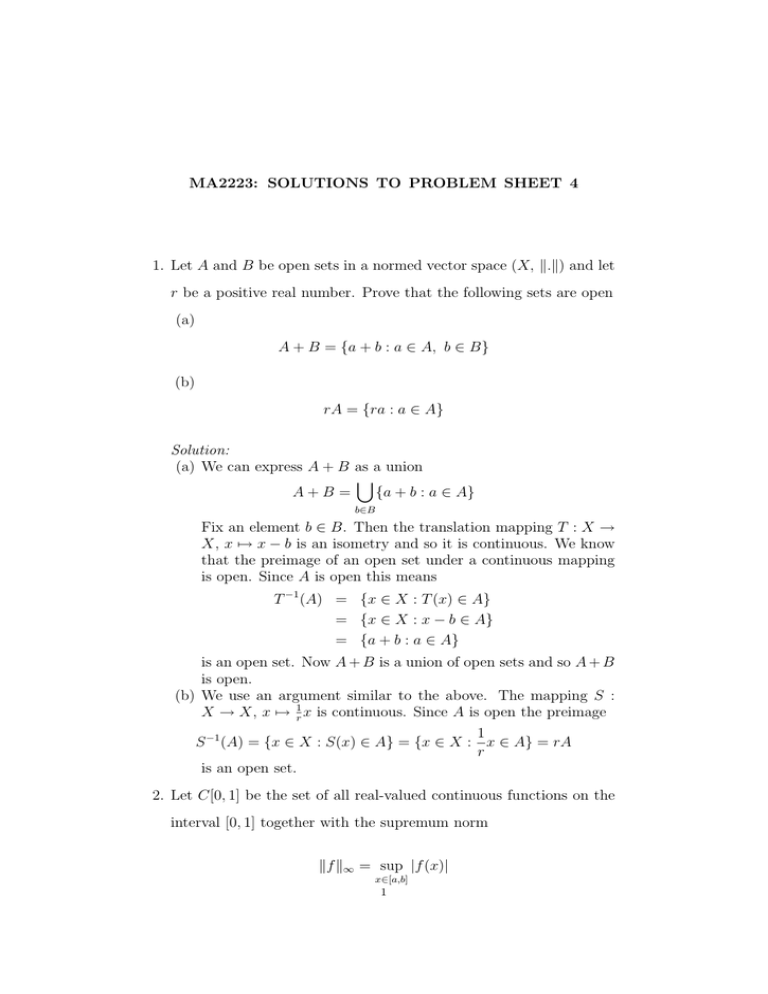
MA2223: SOLUTIONS TO PROBLEM SHEET 4
1. Let A and B be open sets in a normed vector space (X, k.k) and let
r be a positive real number. Prove that the following sets are open
(a)
A + B = {a + b : a ∈ A, b ∈ B}
(b)
rA = {ra : a ∈ A}
Solution:
(a) We can express A + B as a union
[
A+B =
{a + b : a ∈ A}
b∈B
Fix an element b ∈ B. Then the translation mapping T : X →
X, x 7→ x − b is an isometry and so it is continuous. We know
that the preimage of an open set under a continuous mapping
is open. Since A is open this means
T −1 (A) = {x ∈ X : T (x) ∈ A}
= {x ∈ X : x − b ∈ A}
= {a + b : a ∈ A}
is an open set. Now A + B is a union of open sets and so A + B
is open.
(b) We use an argument similar to the above. The mapping S :
X → X, x 7→ 1r x is continuous. Since A is open the preimage
1
S −1 (A) = {x ∈ X : S(x) ∈ A} = {x ∈ X : x ∈ A} = rA
r
is an open set.
2. Let C[0, 1] be the set of all real-valued continuous functions on the
interval [0, 1] together with the supremum norm
kf k∞ = sup |f (x)|
x∈[a,b]
1
2
MA2223: SOLUTIONS TO PROBLEM SHEET 4
Show that the following mappings are continuous
(a)
Tf : C[0, 1] → C[0, 1],
g 7→ f g
where f ∈ C[0, 1] and (f g)(x) = f (x)g(x).
(b)
Tf : C[0, 1] → C[0, 1],
g 7→ g ◦ f
where f : [0, 1] → [0, 1] is a continuous mapping and (g◦f )(x) =
g(f (x)).
Solution:
(a) First note that Tf is a linear operator. We need to show that
there exists a constant M such that kTf (g)k∞ ≤ M kgk∞ for all
g ∈ C[0, 1]. We have
kTf (g)k∞ = kf gk∞
= sup |f (x)g(x)|
x∈[0,1]
=
sup |f (x)| |g(x)|
x∈[0,1]
≤ kf k∞ kgk∞
This shows Tf is continuous (take M = kf k∞ ).
(b) Again note that Tf is a linear operator. We need to show that
there exists a constant M such that kTf (g)k∞ ≤ M kgk∞ for all
g ∈ C[0, 1]. We have
kTf (g)k∞ = kg ◦ f k∞
= sup |g(f (x))|
x∈[0,1]
≤
sup |g(x)|
x∈[0,1]
= kgk∞
This shows Tf is continuous (take M = 1).
